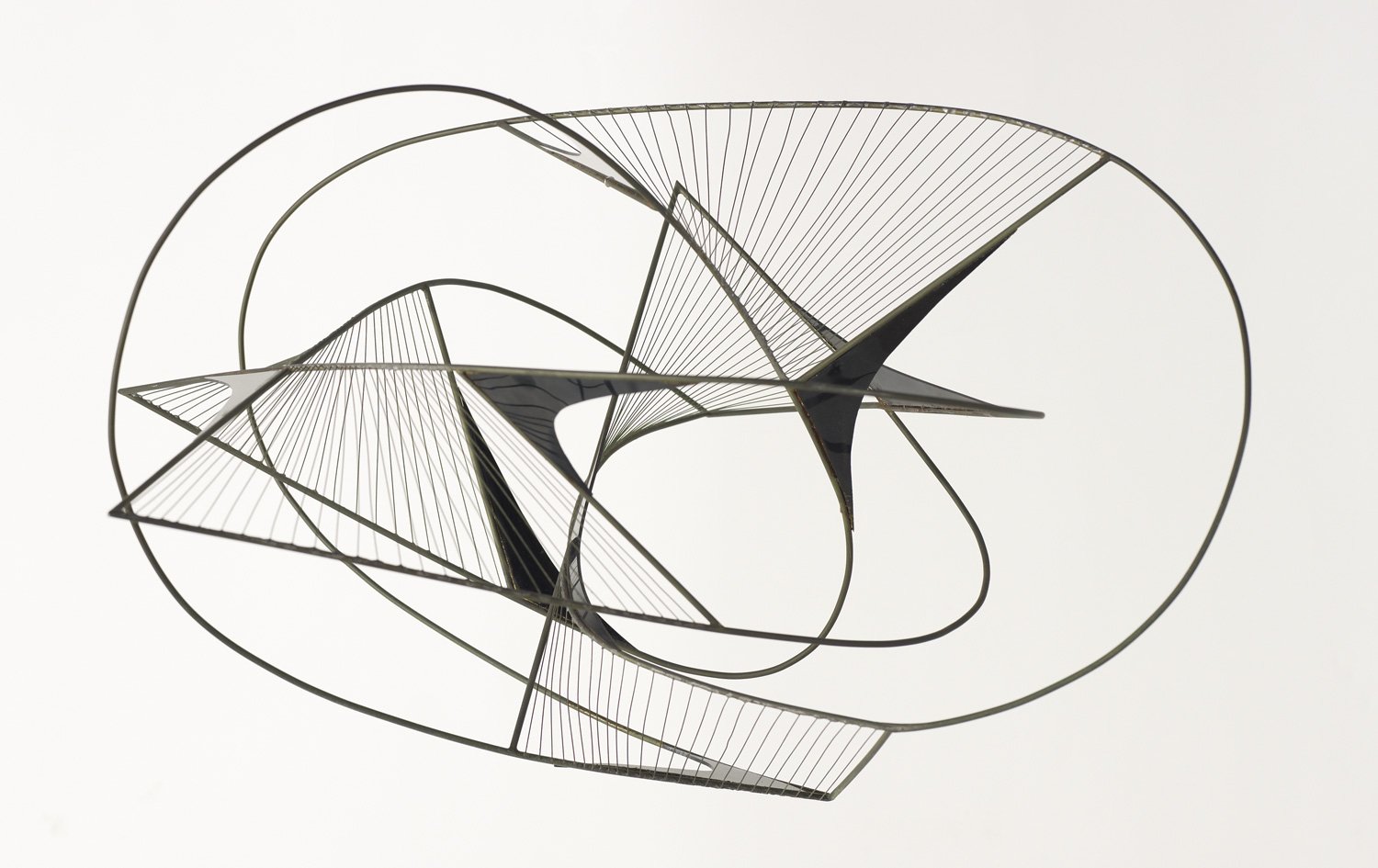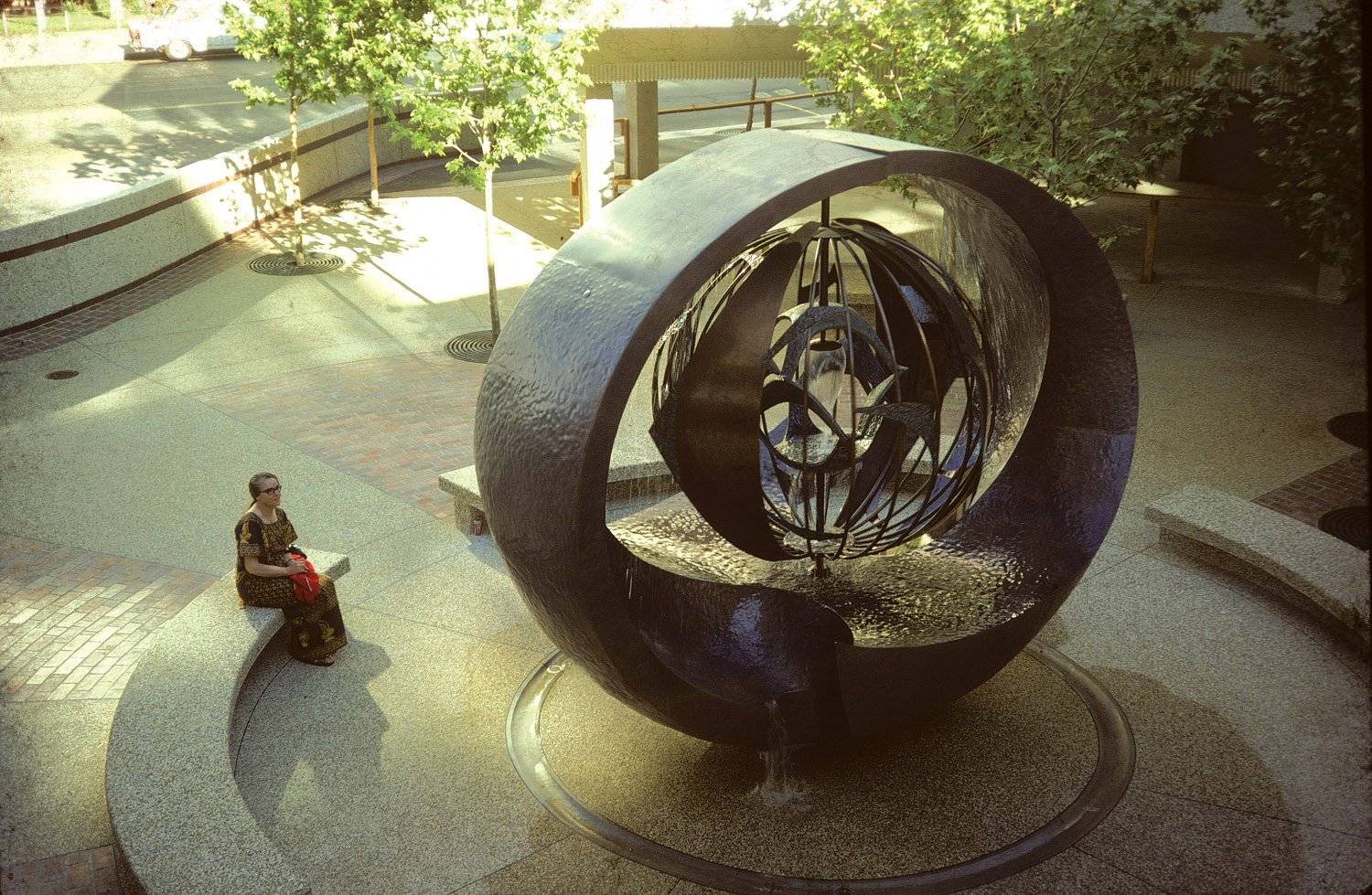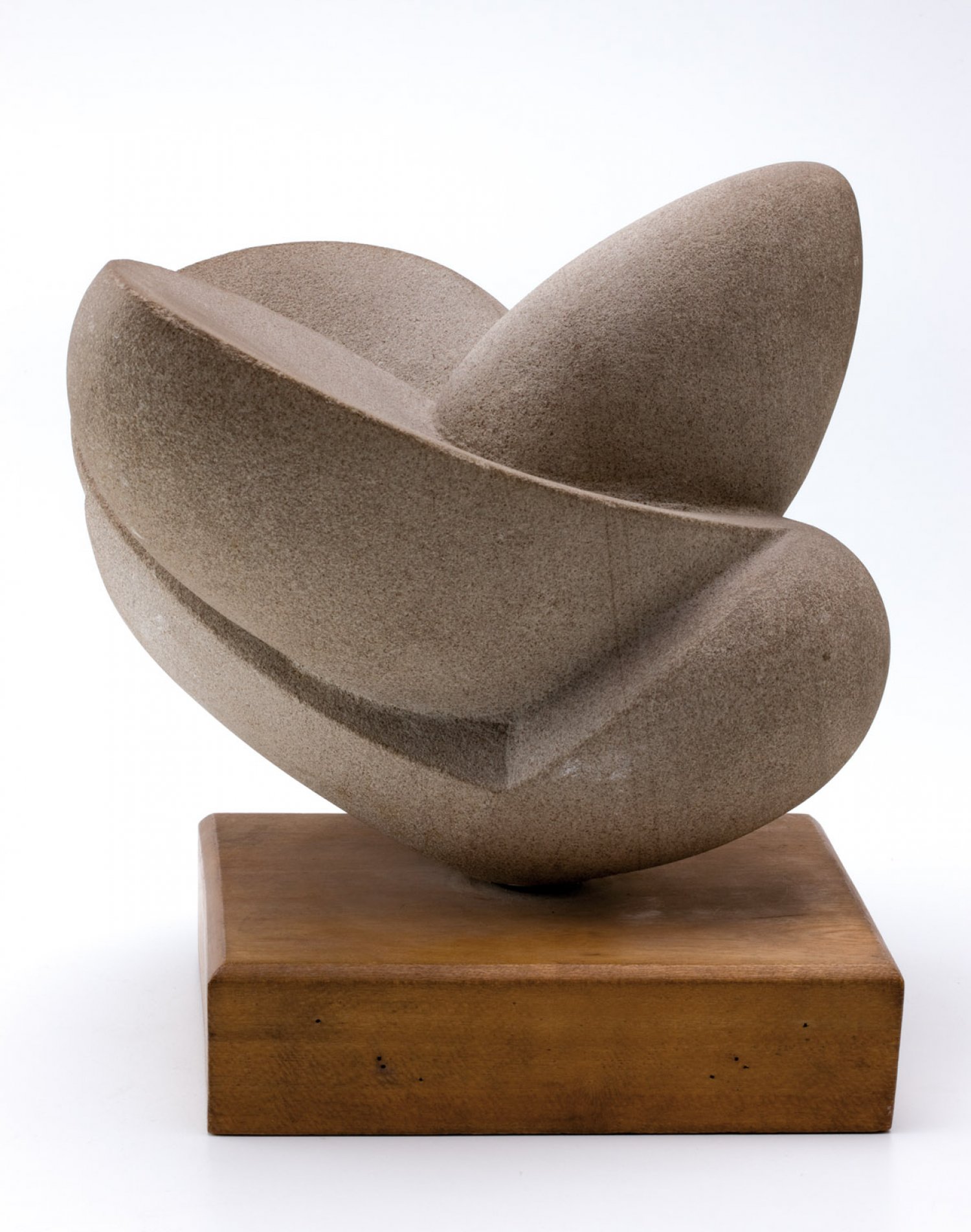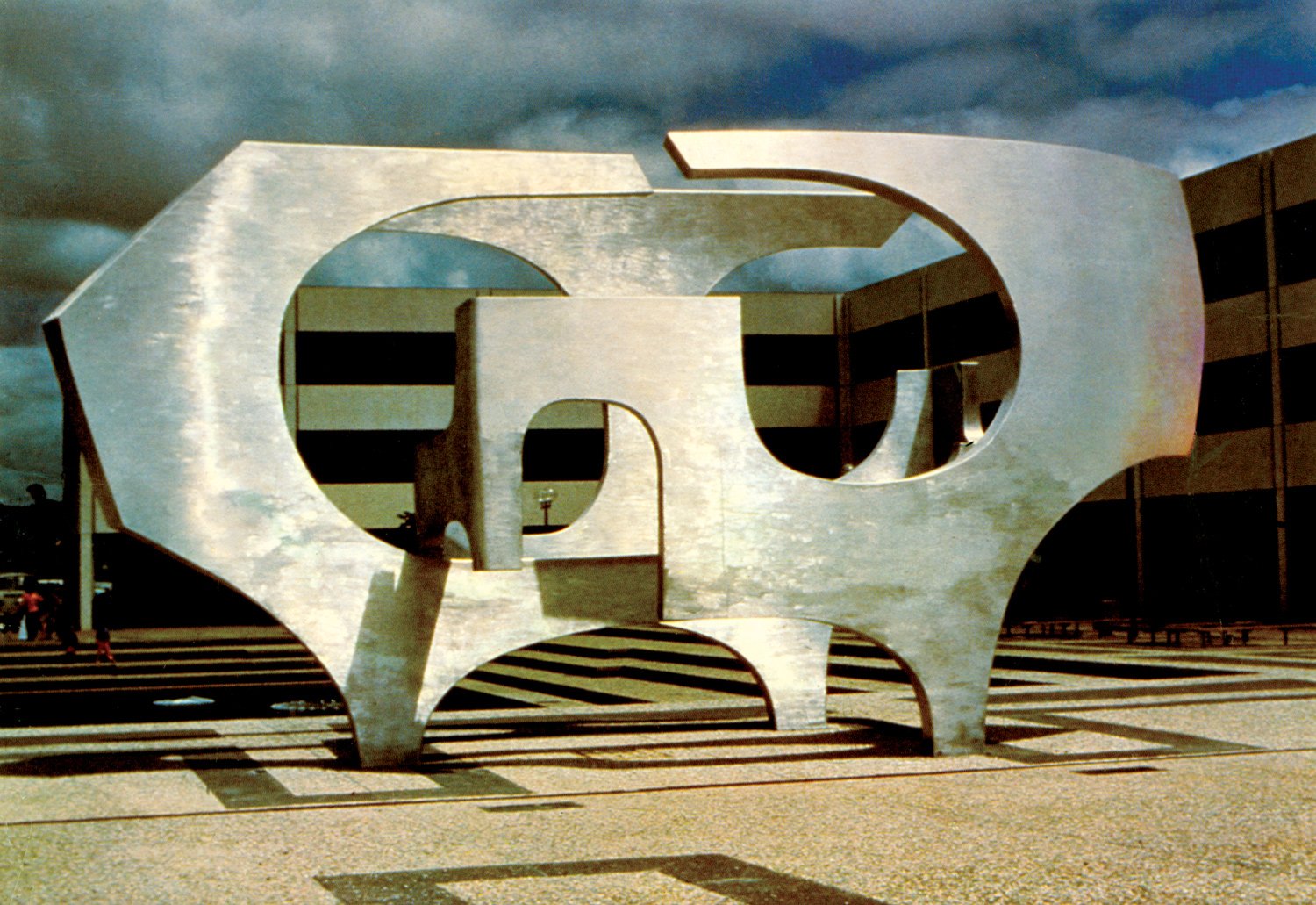Margel Hinder (1906-1995) was one of Australia’s most creative and important modernist sculptors. Born in America, Margel and her Australian husband, Frank Hinder, were exposed to important modern art in the more receptive American setting, and the renewed interest in the Renaissance at that period. She experienced directly, and was influenced by, works by Brancusi, Gabo, Pevsner, Archipenko and Epstein, who were all to have major impacts upon the conceptualisation and production of twentieth century modernist sculpture. From this culturally rich environment she absorbed the belief that the arts, science, mathematics, emotion and reason all contributed to the production of meaningful and aesthetically important art reflecting its era, prior to arrival in Australia in 1934.
Her mature Australian works in wood, stone, metal and mixed media are concerned with movement, light, space and time. Many of these works were created after her active involvement in experiments into human perception and camouflage during World War 2, and are designed to force the observer – through movement either of the viewer or work – to engage in the active construction of meaning and a sense of aesthetic completeness. Her sculptures that are deliberately designed to force viewers to construct meaning, including the aesthetically successful motorised works, arguably make serious contributions to international modernist theory and practice.
Determinedly international in outlook, Margel Hinder produced intellectually demanding abstract work of high quality, at a time when Australian art was still focused largely upon issues of national identity and eschewed abstraction. Rare exposure of Margel’s work in international sculpture competitions resulted in high praise and achievement. Her prize-winning entry, among 3502 world-wide from 56 countries in the 1953 Unknown Political Prisoner competition, was ranked alongside the internationally renown sculptors Alexander Calder, Max Bill, Naum Gabo, Antoine Pevsner and Barbara Hepworth.
Margel’s ability to incorporate motors into her work to achieve aesthetically successful moving sculptures makes her one of only a very small group of modernist sculptors to have succeeded in this endeavour. Perhaps the sculptures that best embody Margel’s artistic concerns, and are also the most innovative in terms of international sculptural achievement, are her elegant, motorised, revolving constructions of the mid 1950s that create virtual forms as they rotate, change, reflect light, create shadows and carve out space in real time.
Margel produced only a relatively small number of high quality, distinctively individual works. Reasons for this include the general lack of interest in sculpture as an art form and of patronage of sculptors in Australia at this period, her concentration upon producing large scale sculptures for public enjoyment, doing all her own work (like Brancusi) until 1972, and the financial necessity to engage in commercial art work for many years with her husband, Frank Hinder, while also raising a family. Given the limited time available for her own serious artistic production, Margel’s efforts appear to have been concentrated on the exploration of distinctly different artistic problems and challenges, rather than series of closely related works.



